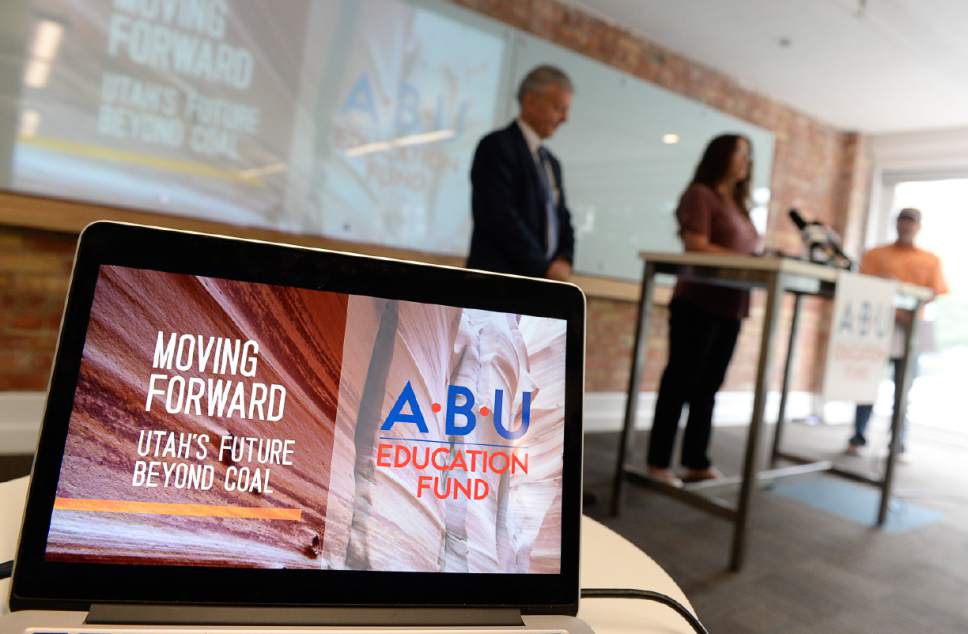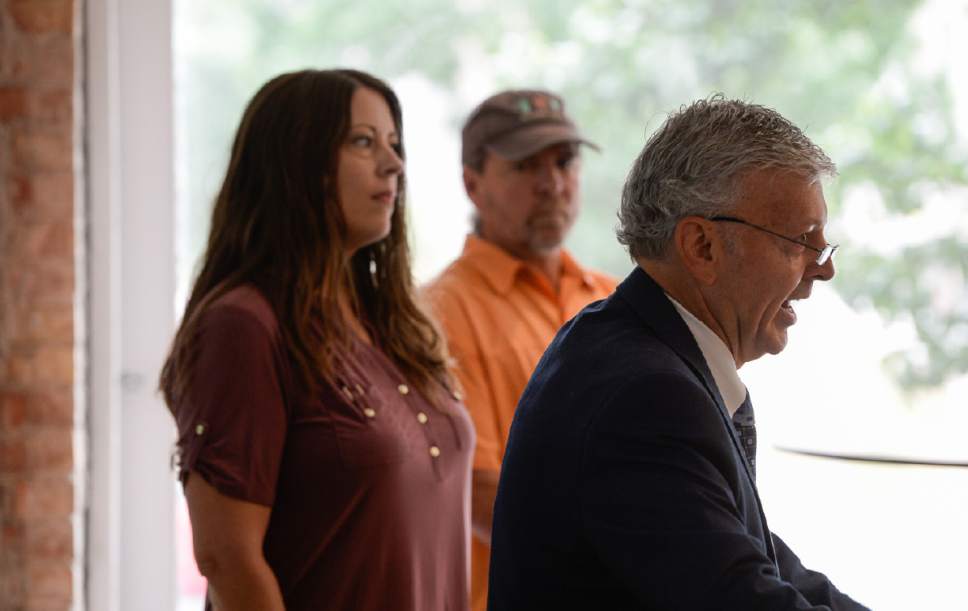This is an archived article that was published on sltrib.com in 2017, and information in the article may be outdated. It is provided only for personal research purposes and may not be reprinted.
Nearly $400 billion worth of high-quality coal lies under lands protected by the Grand Staircase Escalante National Monument, but the best thing for Utah would be to leave this black bounty where it is — in favor of embracing cleaner energy sources and outdoor recreation, both of which abound in the Beehive State.
So says a new report from the group Alliance for a Better Utah that highlights the coal industry's ever-dimming future and rising prospects of eco-based tourism.
"Outdoor recreation provides 76 times as many jobs in Utah as coal — 122,000 versus 1,600 — and 27 times as much in salary and wages — $3.6 billion versus $132.8 million," said Jonathan Ruga, an Alliance for a Better Utah board member.
The ABU Education Fund released the report on behalf of the progressive-leaning alliance on Tuesday, entitled "Moving Forward," in advance of the final Outdoor Retailer summer show in Salt Lake City this week. After a 20-year run, the outdoor industry pulled its twice-a-year convention from the Salt Palace in protest of Utah's public lands policies that favor extraction over all other uses.
The Utah governor's office did not respond Tuesday to a request for comment, but officials have previously emphasized that prospects for Utah's famously low-sulfur coal could be revived through exports and technologies that clean up coal emissions and find new applications for the mineral.
Compiled by alliance volunteer Doris Schmidt, the new report taps economic data from Utah and federal agencies and a recent three-part report by the nonprofit Utah Foundation.
The document lists a litany of grim statistics for coal that are not new, but rather cast a new light on Utah's official call to shrink the Staircase monument to exclude the coal-bearing Kaiparowits Plateau.
Nationally, 50 coal producers have gone bankrupt since 2012, while just six of the Utah mines operating in 2001 remain active today. Utah coal production is at its lowest since 1978 and coal employment has plunged 28 percent between 2011 and 2015, according to the report.
Opening the Kaiparowits would hardly reverse or even slow the industry's decline, which has more to do with technological innovation and market forces than government policies and regulations.
"Coal extraction from beneath Grand Staircase would be logistically difficult at best, and very expensive, as the area is remote and the current infrastructure is inadequate to extract and transport coal," said Ruga, an executive of a Salt Lake City financial firm. "The decline of our nation's and our state's coal industry creates significant challenges for those who make their living in that industry. We must take reasonable steps to address those economic challenges."
The Grand Staircase, as well as Utah's new Bears Ears National Monument, are among 27 large monuments under "review" by Interior Secretary Ryan Zinke, who is to release recommendations in late August. He is expected to urge President Donald Trump to drastically "right size" the two Utah monuments, which state officials contend are way too large and strangle local economies.
But many business owners in Kane and Garfield counties say the 1.9-million Staircase has been on balance an economic driver, not a drag. Shrinking the monument could have devastating consequences for towns rimming the monument, according to Suzanne Catlett, president of the Escalante and Boulder Chamber of Commerce.
Chamber member businesses are enjoying another banner year. If anything, Escalante is suffering from a housing shortage because of an influx of workers coming to the historic ranching town to fill jobs with new and growing restaurants, contracting firm and hotels, according to Ron Johnson, owner of the Boulder Mountain Guest Ranch.
"They are having revenue days higher than ever, for that we thank the outdoor recreation industry and visitors, said Catlett, who has operated Nemo's Drive Thru for the past six years. She is dismayed that county and state leaders routinely ignore substantiated facts as they repeat calls for monument reduction and denigrate tourism as a base for a viable economic future.
"An industry that steadily increases revenue each year is the industry to invest in. For a rural county with strapped budgets, why invest in a coal venture that would likely end in bankruptcy or not be profitable in the first place?" said Catlett, who is a mother of two sons in college studying toward degrees geared toward resource stewardship and solar engineering.
"These young men are not sitting waiting for times to change or for a job to fall in their lap," she said. "Self-reliance, planning and accepting the fact act we can't return to 1996 [the year the Staircase was designated] is a healthy way to move forward."
Brian Maffly covers public lands for The Salt Lake Tribune. Brian Maffly can be reached at bmaffly@sltrib.com or 801-257-8713.
Twitter: @brianmaffly
Editor's note: An earlier version of this story misrepresented Jonathan Ruga's quote about how many jobs — 122,000 — outdoor recreation provides in Utah.





